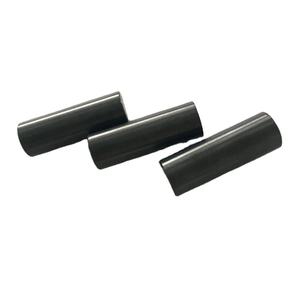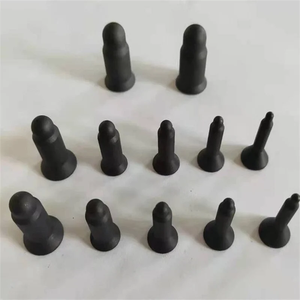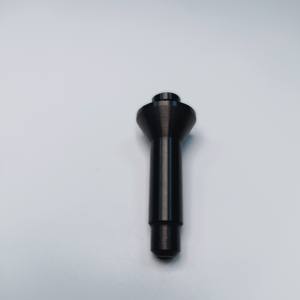Professional industry ceramic supplier, silicon nitride, silicon carbide, aluminum nitride and any other kinds of ceramics.
PRODUCT PARAMETERS
Description
Overview of High Temperature Resistant Industry Ceramic Part Silicon Nitride Ceramic
High Temperature Resistant Industry Ceramic Part Silicon Nitride Ceramic is a high-performance advanced ceramic renowned for its exceptional combination of thermal shock resistance, high strength, toughness, and excellent wear and corrosion resistance. It is a material of choice for demanding applications across various industries, from automotive and aerospace to industrial and medical.
Features of High Temperature Resistant Industry Ceramic Part Silicon Nitride Ceramic
l Excellent Thermal Shock Resistance: Withstands rapid temperature changes without cracking.
l High Strength & Hardness: Maintains mechanical properties at both room and elevated temperatures.
l Good Fracture Toughness: Superior to many other technical ceramics, providing better resistance to chipping and breakage.
l Low Density & Lightweight: Significantly lighter than steel and many metals.
l Wear & Corrosion Resistance: Ideal for components exposed to abrasive and corrosive environments.
l Electrical Insulation: Offers good dielectric properties.
Specification of High Temperature Resistant Industry Ceramic Part Silicon Nitride Ceramic
Silicon nitride ceramic parts handle extreme heat well. This material works fine at temperatures over 1200 degrees Celsius. Many metals weaken or melt long before this point. These ceramics keep their strength even when red hot. This is vital inside furnaces, engines, and turbines.
The material also resists thermal shock effectively. It does not crack easily when heated or cooled fast. This matters a lot for parts experiencing sudden temperature changes. Think of burner nozzles or heat exchanger components. Sudden cooling won’t shatter them.
Silicon nitride is incredibly hard too. It resists wear and abrasion far better than steel. Parts last much longer in gritty, harsh conditions. This reduces downtime and replacement costs. You see this benefit in pump seals and cutting tools.
Chemical resistance is another key feature. Acids, alkalis, and molten metals rarely attack it. This makes it perfect for chemical processing equipment. Crucibles and thermocouple tubes often use silicon nitride.
These ceramics are lightweight compared to metals. They are only about half the weight of steel. This helps reduce overall system weight. It can improve efficiency in moving parts.
The material handles high pressure loads well. It has excellent mechanical strength. Silicon nitride parts withstand heavy forces without deforming. This reliability is crucial for demanding industrial jobs.
Electrical insulation is important too. Silicon nitride doesn’t conduct electricity. It works safely in electrical applications needing heat resistance. Insulators and substrates benefit from this property.
Its low thermal expansion helps stability. Dimensions change little with temperature swings. This precision is key for parts requiring tight tolerances. Predictable performance is the result.
Applications of High Temperature Resistant Industry Ceramic Part Silicon Nitride Ceramic
Silicon nitride ceramic parts handle extreme heat reliably. This material works well above most metals. It keeps its strength even at very high temperatures. This is vital for demanding industrial settings. Heat won’t easily damage silicon nitride.
Factories use these ceramics in many hot places. Automotive makers need them inside engines. Turbocharger rotors made from silicon nitride spin incredibly fast under intense heat. They last much longer than metal versions. Exhaust gas control valves also benefit. Silicon nitride withstands the harsh exhaust environment.
Jet engines and power turbines rely on silicon nitride too. Turbine blades face extreme conditions. Silicon nitride components manage the heat and stress. They help engines run more efficiently. This material is lighter than metal alloys. This weight saving matters for aircraft performance.
Manufacturing equipment often gets very hot. Silicon nitride rollers guide hot metal strips in steel mills. They don’t deform under the heat and pressure. Bearings made from silicon nitride run smoothly in furnaces. They need less lubrication. This reduces downtime and maintenance costs. Silicon nitride resists wear extremely well. Parts don’t need replacing as often.
The semiconductor industry uses silicon nitride crucibles. These hold molten silicon during crystal growth. The material doesn’t contaminate the silicon. It survives the intense heat perfectly. Silicon nitride fixtures also hold wafers during high-temperature processing steps. They provide stable, clean support.
Company Profile
Tanki New Materials Co.Ltd. focus on the research and development, production and sales of ceramic products, serving the electronics, ceramics, chemical and other industries. Since its establishment in 2015, the company has been committed to providing customers with the best products and services, and has become a leader in the industry through continuous technological innovation and strict quality management.
Our products includes but not limited to Aerogel, Aluminum Nitride, Aluminum Oxide, Boron Carbide, Boron Nitride, Ceramic Crucible, Ceramic Fiber, Quartz Product, Refractory Material, Silicon Carbide, Silicon Nitride, ect. please feel free to contact us.

Payment Methods
T/T, Western Union, Paypal, Credit Card etc.
Shipment Methods
By air, by sea, by express, as customers request.
5 FAQs of High Temperature Resistant Industry Ceramic Part Silicon Nitride Ceramic
What temperature can silicon nitride ceramic handle?
Silicon nitride ceramic withstands extreme heat. Its maximum continuous use temperature typically reaches 1370°C (2500°F). Short-term exposure can go even higher, around 1600°C (2912°F). This makes it suitable for very hot industrial processes.
Does silicon nitride stay strong when hot?
Yes. Silicon nitride keeps impressive strength at high temperatures. Most metals weaken significantly above 1000°C. Silicon nitride retains much of its room temperature strength even near its maximum use temperature. This prevents parts from failing under load in hot environments.
Can silicon nitride handle sudden temperature changes?
Absolutely. Silicon nitride has excellent thermal shock resistance. It resists cracking when heated or cooled rapidly. This property is crucial. Parts often experience quick temperature shifts in furnaces or engines. Silicon nitride handles these changes reliably.
Is silicon nitride resistant to chemical attack?
Yes. Silicon nitride offers strong chemical resistance. It performs well against molten metals like aluminum. It resists attack from many acids and bases. This chemical inertness prevents degradation. Parts last longer in harsh chemical or metallurgical settings.
Where are silicon nitride parts commonly used?
These parts are vital in demanding industries. You find them in jet engine components, turbine blades, and welding nozzles. They are used in molten metal handling, like thermocouple tubes. High-temperature furnace fixtures and burner nozzles also rely on silicon nitride. Its properties solve problems in severe heat.
REQUEST A QUOTE
RELATED PRODUCTS

High Wear Resistant Gas Pressure Sintering Silicon Nitride Si3n4 Ceramic Square Bar

High-Performance OEM Silicon Nitride Ceramics for Industrial Use

Factory High Hardnesstechnical Si3n4 Ceramic Silicon Nitride Sheet

Premium Custom Silicon Nitride Ceramic Bearings for Global Distribution

Superb Wear Resistance Industrial Silicon Nitride Ceramic Ball


